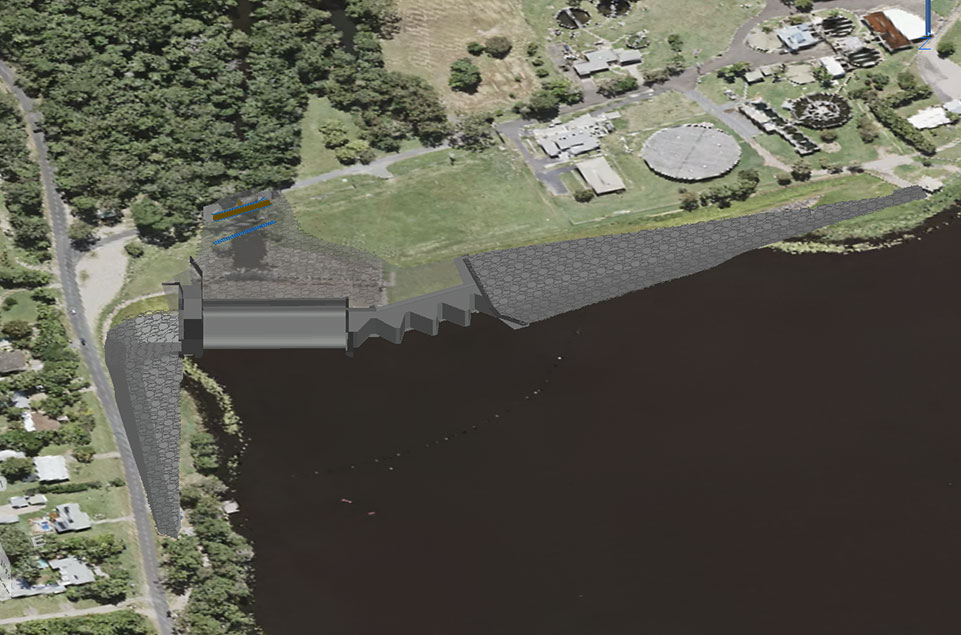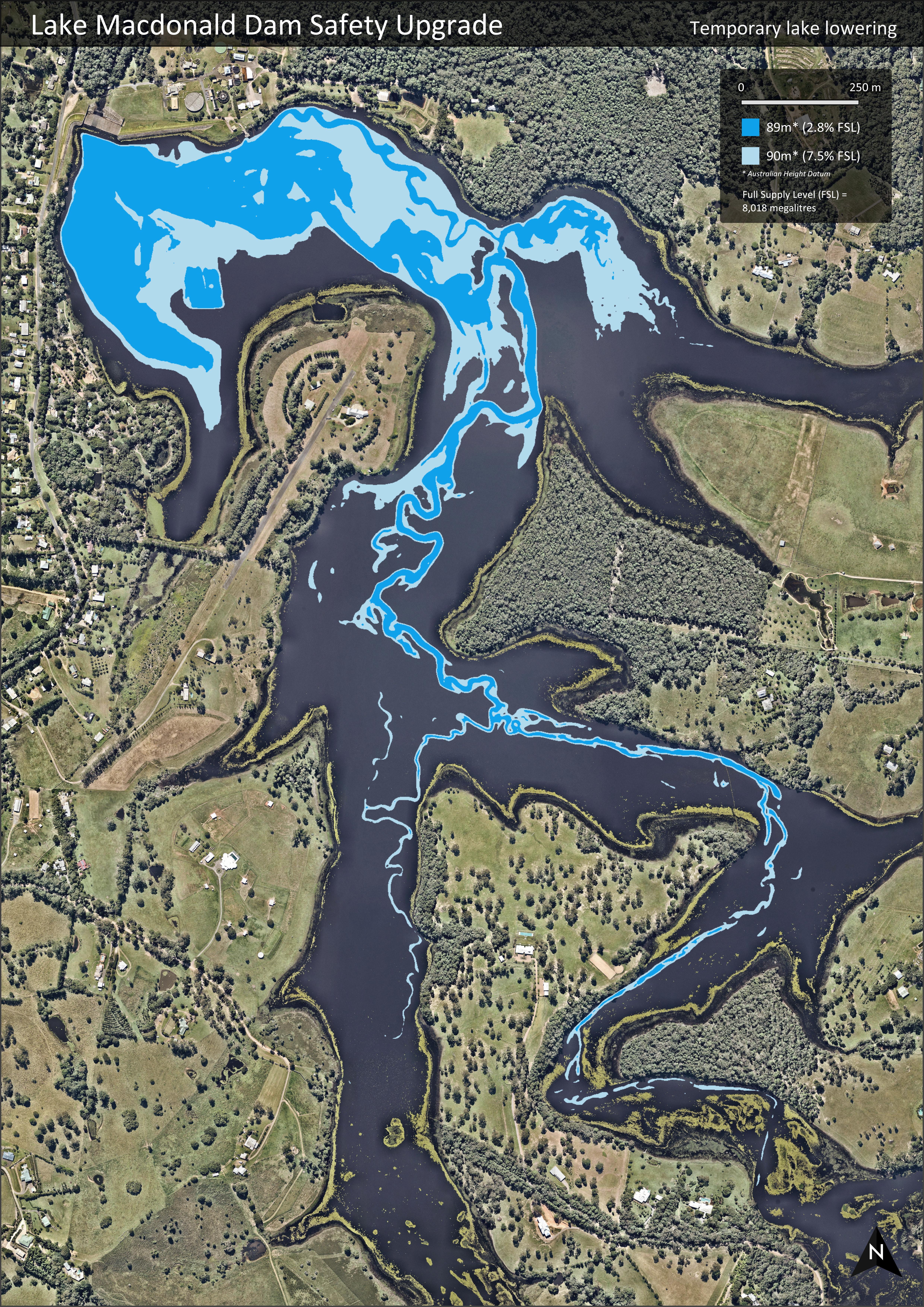There are several reasons why we need to temporarily lower the lake level including to reduce construction risks, manage costs and, most importantly, better protect the people and properties downstream of the dam during construction.
Seqwater assessed more than 100 options to address the dam safety risks at Lake Macdonald Dam including decommissioning the dam and building a new dam. One of the options that didn’t involve lowering the water level was to build the new dam downstream of the existing dam structure. This option was ruled out because there is very limited space available downstream to build.
The option we have selected, to build a new dam at the location of the existing dam involves constructing a small cofferdam structure to hold back the remaining water and protect people living downstream and the people working on the dam. If we were to maintain the current water level in the lake during construction, we would need to effectively build two new dams to the same safety and engineering standards – a large temporary structure (cofferdam) to hold the water back during construction and the new permanent dam structure. Not only is this option not cost-effective, but it would result in additional impacts including dredging and disposal and more trucks on local roads to import materials. It would also mean a longer construction period.
We certainly recognise the impact the temporary lowering will have on neighbours and the natural environment so there’s a significant amount of planning we need to do in consultation with various stakeholders.

